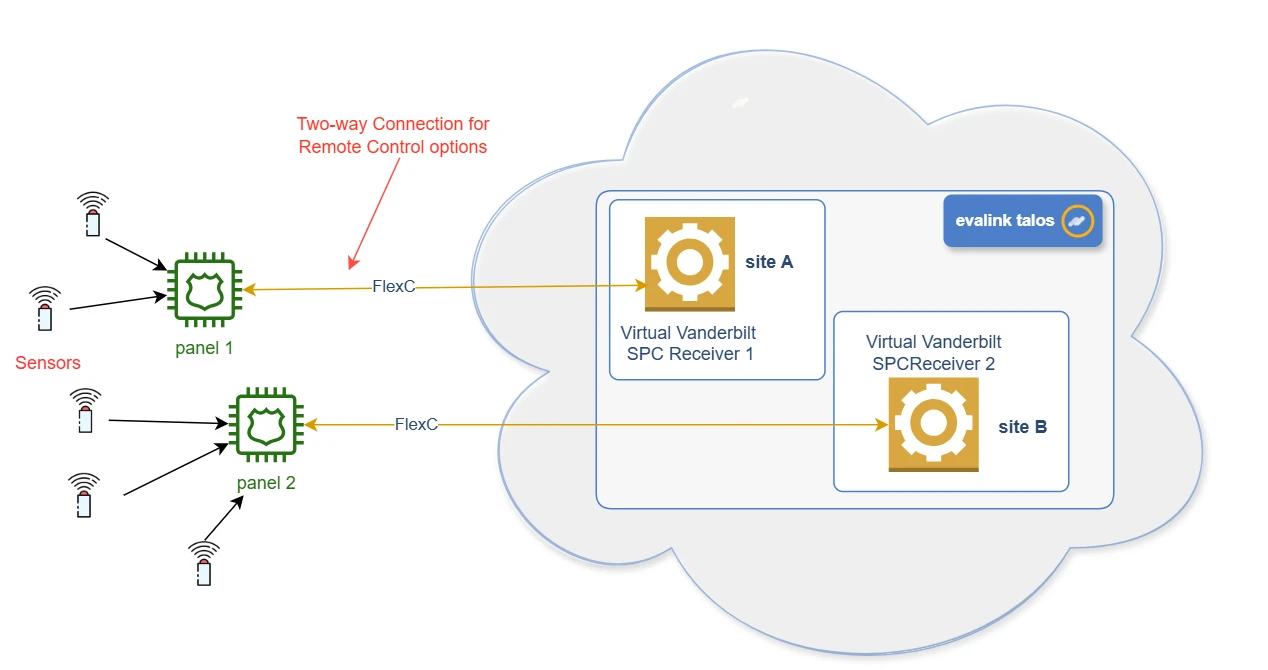Virtual Vanderbilt SPC Receiver Overview
In this section, the term panel indicates a connected 3d-party panel of any model, if not stated otherwise.
The term a receiver instance indicates a single Virtual Vanderbilt SPC Receiver with a unique account assigned by evalink talos.
Virtual Vanderbilt SPC Receiver Overview
Virtual Vanderbilt SPC Receiver is an integration that enables users to connect to Vanderbilt SPC panels which receive signals from a variety of wired and wireless sensors. Communication between Virtual Vanderbilt SPC Receiver and connected panels is carried out via FlexC (Flexible Secure Communications) protocol.
The connection between Virtual Vanderbilt SPC Receiver and Vanderbilt SPC panels is carried out in accordance with EN 50-136-1/3 standards.
Virtual Vanderbilt SPC Receiver is enabled on a global level by users with Administrator permissions and is configured for each site individually by users with Administrator and Manager permission levels.
The direct connection monitoring (SLA) scheme is used to connect an instance of Virtual Vanderbilt SPC Receiver with connecting panels and devices. For details about the direct connection monitoring scheme, see section Direct Connection Monitoring.
The figure below illustrates the connection schemes for the Virtual Vanderbilt SPC Receiver:

Vanderbilt FlexC Protocol
Virtual Vanderbilt SPC Receiver communicates with Vanderbilt SPC panels over FlexC protocol. It is a secure proprietary communication protocol designed for high-speed event transmission between Vanderbilt SPC intrusion panels and central monitoring stations (CMS) or alarm management systems such as evalink talos.
FlexC protocol utilizes TLS encryption for secure event transmission and supports event-based reporting. Using FlexC, a Vanderbilt panel sends alarm signals, status updates, and other security events in real-time.
The FlexC protocol supports bidirectional communication between Vanderbilt panels and evalink talos (remote control available). Aside from receiving event signals from Vanderbilt panels, evalink talos users can also use such remote control functionality as arming and disarming zones, triggering outputs, and changing system settings.
FlexC messages follow a structured format, typically including:
- Header: Identifies the message type and encryption status.
- Event Data: Includes event codes, timestamps, zone details, and user information.
- Authentication Details: Ensures the message originates from an authorized SPC panel.
- Checksum: Validates message integrity.
 Link is copied
Link is copied